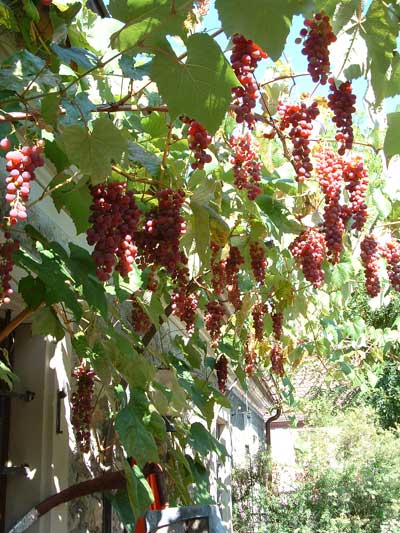Planting grapevines - best practice

Even in places where a harsh climate rules out wine-growing as such, it is possible to cultivate dessert grapes that ripen early and moderately early ripening with a good measure of success. Almost everywhere, it is possible to find climatically favourable niches where the overall warmth during the vegetation period is sufficient to bring the appropriate varieties to full maturity and ripeness.
The Planting Position
A wall facing south-east, south, south-west or west, which accumulates warmth during the day and radiates this out into the evening and night hours. A free-standing trellis at a site protected from wind, too.
The Soil
Heavy clay as well as stony and sandy soil are suitable when there is sufficient humus. Only poorly drained soil is unsuitable.
The Trellis
Narrow, smoothly planed slats neither painted nor impregnated (substances used to protect wood are often damaging to plants), placed at intervals of 25 cm, or taut, rustproof trellis wire at the same intervals.
The Planting Period
Vines in pots or containers can be planted throughout the year. The main planting period, though, is during spring.
Preparation of the soil
A hole 30 cm long and wide with a depth of 40 cm is adequate when the surrounding soil is in a condition that one would normally expect in a garden. If this is not the case, the soil should be loosened at some distance all around the plant.
Planting
The plant is placed in a bucket of water until the root ball is thoroughly soaked. The vine (without the pot) is now placed into the loosened soil at such a depth that the grafting point (a bulge at the upper end of the rootstock) is still above ground level. Vigorous watering ensures that the soil completely covers the root ball. Soil is now gently raised around the plant up to the height of the grafting point. A stake is now pushed in next to the plant, and the young shoot can be loosely tied to this.
Artificial fertiliser should not be used during planting.